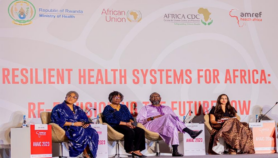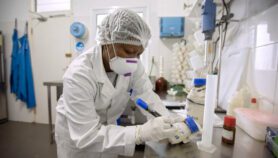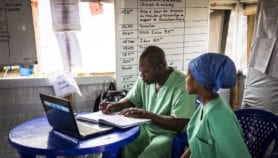By: Archita Bhatta
Send to a friend
The details you provide on this page will not be used to send unsolicited email, and will not be sold to a 3rd party. See privacy policy.
[NEW DELHI] Health sector research collaboration between India and Bangladesh is strengthening, leading to more publications and new technology to tackle health problems of importance to both countries, according to a new study.
Between 1994 and 1997, India and Bangladesh had only one co-authored paper, but this number increased to 31 between 2002 and 2005, the study, by the Indian government think-tank Research and Information System for Developing Countries, found.
The National Institute of Cholera and Enteric Diseases (NICED), the Jawaharlal Institute of Postgraduate Medical Education and Research and Jadavpur University, all based in Kolkata, and the International Centre for Diarrhoeal Diseases Research, Bangladesh (ICDDR,B) in Dhaka are involved in the collaborations.
In 2004, researchers from NICED and ICDDR joined US scientists in developing technology for quick detection of Helicobacter pylori, a bacterium that infects the stomach and is common in developing countries. The technology, called the ‘multiplex polymerase chain reaction assay’, allows the disease-causing bugs to be obtained directly from the stomach, avoiding the culturing of strains, and saves time and cost.
"It is notable how much India collaborates with Bangladesh, a neighbouring country with a relatively embryonic biotech sector. Bangladesh is India’s second-most common research collaborator in health biotech," said Sachin Chaturvedi, co-author of the study.
The study finds government will in joint participation under the South Asian Association for Regional Cooperation and trilateral cooperation among India, Bangladesh and Nepal to work on kala azar or visceral leishmaniasis — the world’s most deadly parasitic disease after malaria.
Chaturvedi pointed out that most of these collaborations are set up between individuals rather than through formal agreements with long-term targets.
For example, collaborative work on H. pylori drug resistance was set up through personal contacts between Ashis Mukhopadhyay of NICED and Motiur Rahaman of ICDDR. They have identified a number of drugs to which H. pylori strains are sensitive.
With funds from the Indian Council of Medical Research, NICED hopes to boost collaboration with the ICDDR.
Chaturvedi suggested that joint research councils and fellowships to fund research could go a long way in improving partnerships in the health sectors of the two countries.













